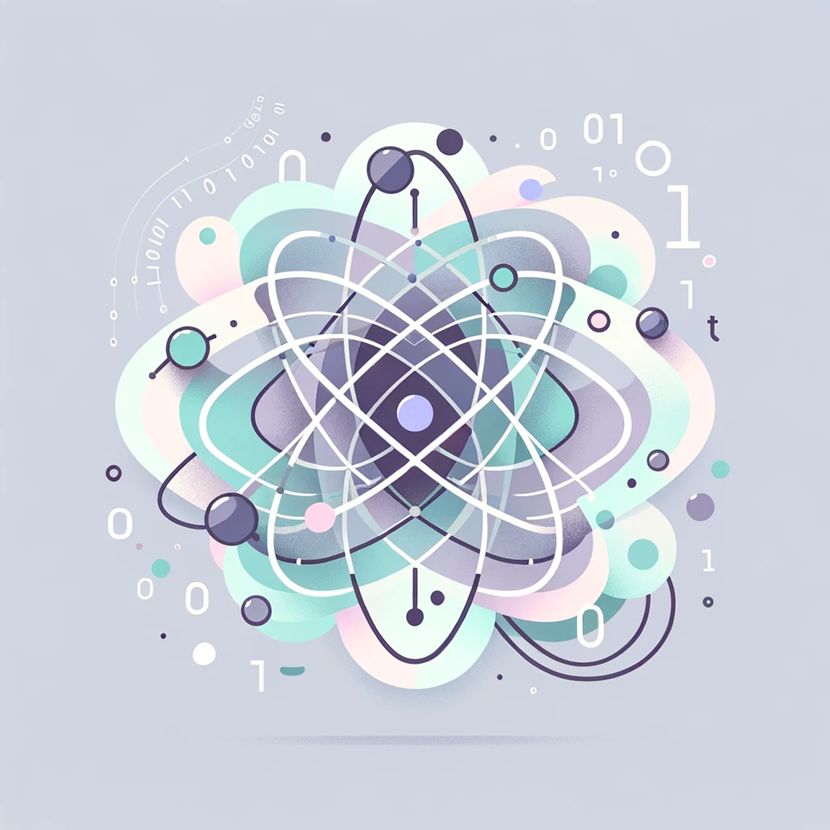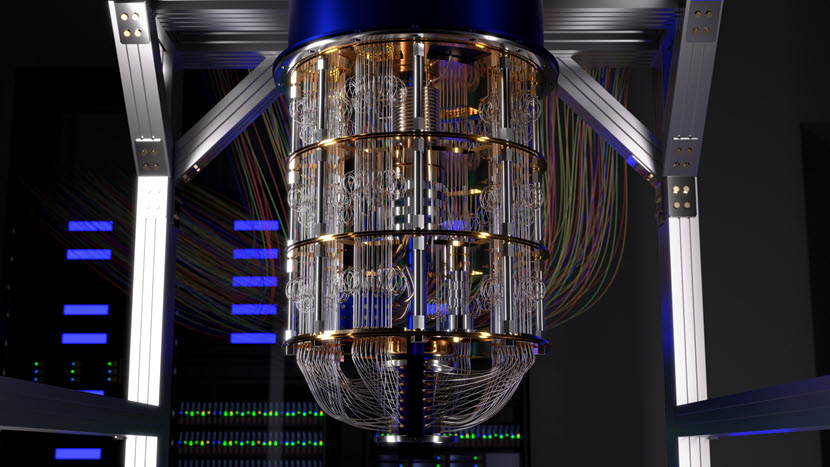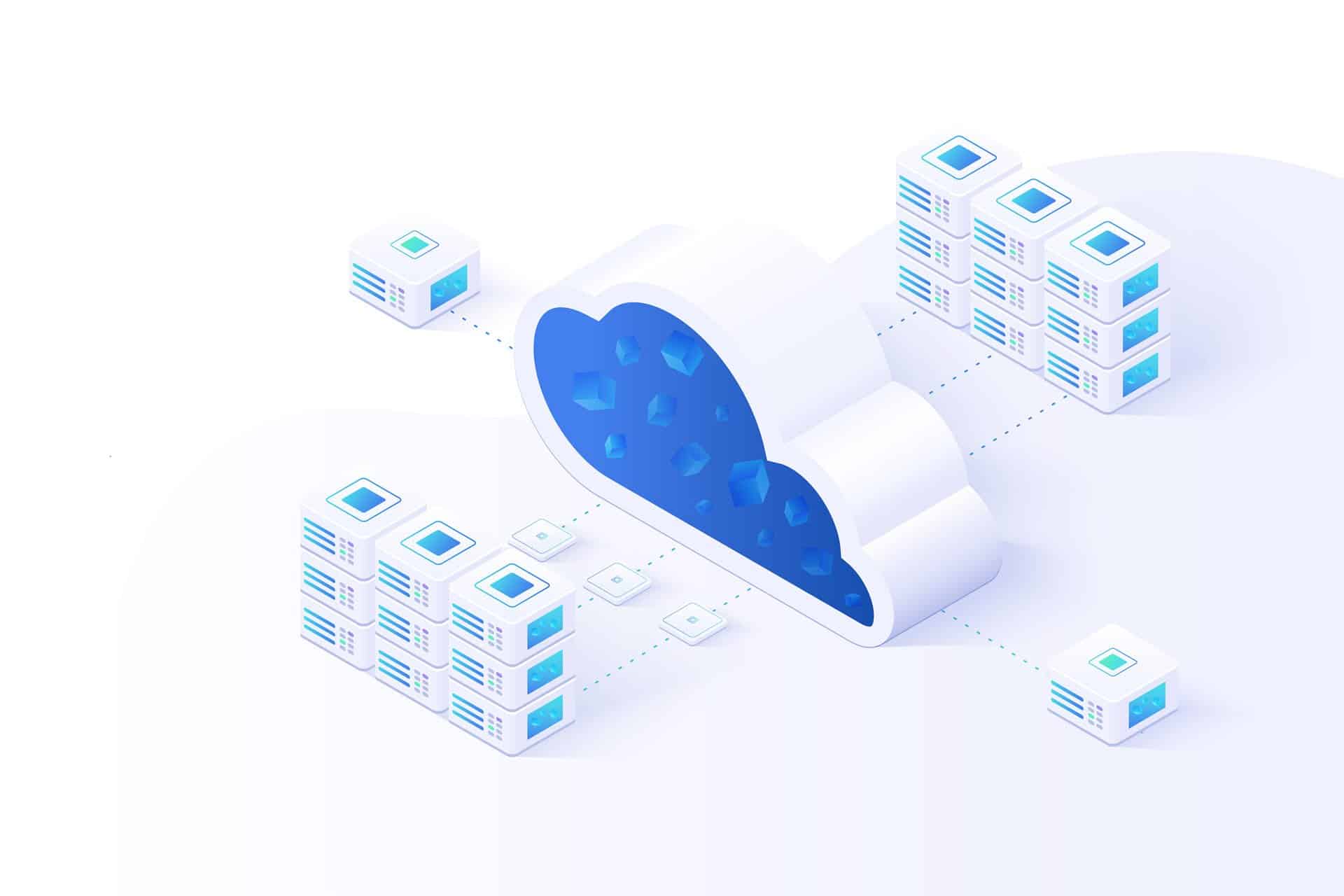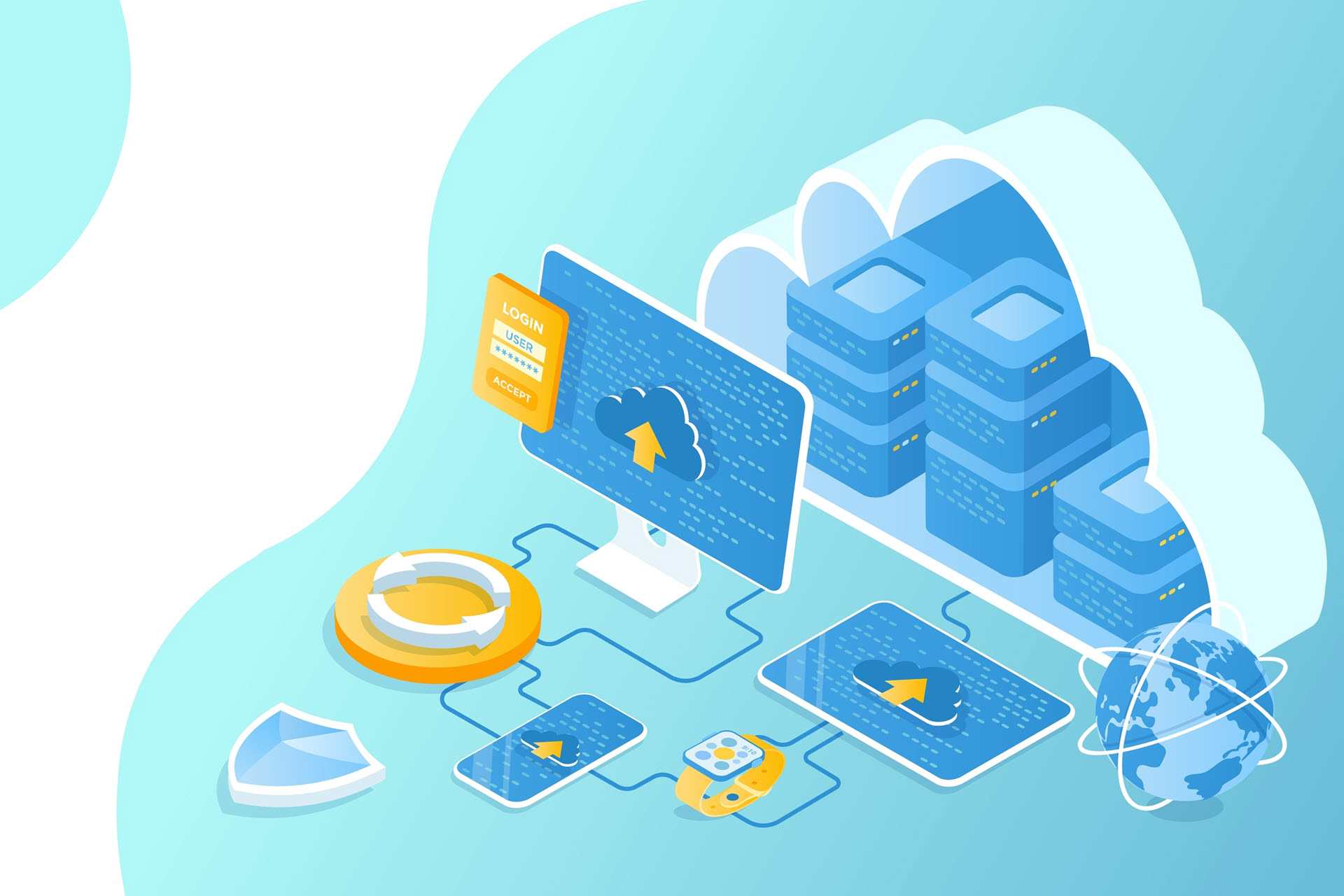Quantum computing has captured widespread attention in the media, scientific, and professional communities due to its potential to transform various fields, including materials science, drug discovery, and artificial intelligence. Given the profound implications for future technologies, understanding quantum computing is vital for staying informed about the next significant advances in computing.
This article will provide an introduction to quantum computing. We will explore the core principles that differentiate it from classical computing, investigate the phenomena of superposition and entanglement that underpin its power, and conclude by examining the potential applications driving this exciting field forward.

What Is Quantum Computing?
Quantum computing harnesses quantum mechanics to perform computations. This form of computing leverages the concepts of superposition and entanglement to process information represented by quantum bits or qubits.
Unlike binary bits in classical computing, which are distinctly 0 or 1, thanks to superposition, qubits can simultaneously exist in multiple states, allowing a quantum computer to process an extensive array of possibilities in parallel. This unique approach enables quantum computers to solve complex problems more efficiently than classical computers, particularly those involving vast data sets or requiring high computation speeds, such as in cryptography or complex simulations.
Quantum Computing Principles
Quantum computing harnesses quantum mechanics to process information in unimaginable ways. Here are the three core principles that underpin this technology:
Superposition
Central to both quantum mechanics and quantum computing, the principle of superposition allows qubits to occupy multiple states (0 and 1) simultaneously. This contrasts sharply with classical bits, which must be either 0 or 1. This principle mirrors wave-particle duality in quantum mechanics, where particles exhibit both wave-like and particle-like properties. In quantum computing, qubits remain in all possible states until measured.
Superposition enables quantum computers to process numerous possibilities simultaneously, significantly boosting computational speed and capacity.
Entanglement
Entanglement is a fundamental aspect of quantum mechanics leveraged in quantum computing. In this phenomenon, the state of one qubit (whether 0 or 1) becomes dependent on the state of another, regardless of the distance between them.
Quantum entanglement enables instant and complex interconnections across multiple qubits, allowing a level of parallel processing that classical systems cannot achieve. As a result, entanglement significantly enhances the efficiency and speed of quantum information processing.
Quantum Interference
Quantum computers use the principle of quantum interference to optimize the probabilities of qubit states toward the most likely correct answers. By adjusting the phases of qubits, this mechanism amplifies constructive interference (increasing the likelihood of correct pathways) and minimizes destructive interference (removing less likely outcomes).
This process reflects the interference patterns in quantum mechanics, where the superposition of multiple wavefunctions determines the probabilities of particle positions and states.

Quantum Computer Components
The architecture of a quantum computer is significantly different from that of a classical computer due to the unique components required to handle quantum information.
Qubits
Qubits are the fundamental elements of quantum information, and their properties vary depending on the physical system used to create them. Here's a closer look at the various types of qubits:
- Superconducting circuits. These circuits operate at extremely low temperatures to achieve quantum states. They provide fast processing speeds but require complex cooling infrastructure to maintain the necessary conditions.
- Trapped ions. In these systems, individual ions are held in place by electromagnetic fields and manipulated with lasers. This setup allows for high precision and longer coherence times, making trapped ions suitable for more stable quantum computations.
- Photons. In optical quantum computers, photons encode and manipulate information through light. This method offers advantages in high-speed transmission and is inherently resistant to decoherence, making it effective for quantum communications.
- Semiconductor quantum dots. These systems operate similarly to trapped ions but within a solid-state environment. Semiconductor quantum dots can integrate more seamlessly with existing semiconductor technologies, aiding the development of scalable quantum computers.
The selection of qubit technology is a critical decision that directly affects a quantum computer's stability, coherence time, and operational speed. This, in turn, has a profound impact on the computer's performance and its suitability for various applications.
Quantum Gates
Analogous to classical logic gates that perform logical operations on bits, quantum gates operate on qubits by exploiting quantum mechanical properties like superposition and entanglement. Operations performed by quantum gates include the rotation of qubit states, which alters the probability of them being measured in a particular state, and the entangling of qubits, which links their properties so that the state of one (whether it exists as 0, 1, or both) depends on the state of another.
These gates are critical for manipulating the quantum data necessary to perform complex calculations that are impractical for classical computers.
Quantum Circuit
A quantum circuit refers to the interconnected series of gates organized to implement quantum algorithms. The circuits are designed in either sequential or parallel layouts, depending on the specific computational task. The design and complexity of quantum circuits are vital, as they need to execute multiple quantum phenomena accurately and efficiently. Proper circuit design ensures that quantum operations are performed in the right sequence and with the necessary precision to achieve the intended outcomes, maximizing the computational power of the quantum processor.
Quantum Processor
The quantum processor is the core component of quantum computations. It executes algorithms through quantum circuits, coordinating the complex interactions among qubits via quantum gates. The processor's performance heavily depends on its ability to maintain quantum coherence among qubits over operational periods and minimize decoherence, which disrupts quantum states.
Effective quantum processors manage these challenges through sophisticated designs that optimize both the physical layout of qubits and the operational dynamics of quantum gates and circuits.

How Does a Quantum Computer Work?
Below is a step-by-step breakdown of how a quantum computer works.
1. Encoding Problems into Qubits
A quantum computer initiates operations by encoding a specific problem into the states of its qubits. This encoding is the first step in preparing the quantum computer to process information.
2. Manipulating Qubits with Quantum Gates
Once the problem is encoded, the computation proceeds by manipulating these qubits within a quantum circuit. This manipulation involves using quantum gates, which perform operations based on the quantum principles of superposition, entanglement, and interference.
3. Steering Outcomes with Quantum Interference
As the computation progresses, quantum interference is strategically applied to direct the outcomes towards the most likely correct answers. This process involves precise adjustments to the phases of the qubits to control the interference patterns effectively.
4. Measuring and Collapsing Qubit States
The final step in the quantum computing process involves several actions:
- Measuring the qubits. In this step, the quantum information is finally read out.
- Collapsing their quantum state. Upon measurement, the superposition state of the qubits collapses to a specific classical state, either 0 or 1.
- Providing the computation's output. The measurement results are then translated into usable output, solving the encoded problem.
5. Maintaining Quantum Coherence
Maintaining the quantum state of qubits without them losing their quantum properties (a problem known as decoherence) is essential throughout the process. Decoherence must be minimized to preserve the integrity and accuracy of the quantum computation. Additionally, keeping error rates low enough for practical applications becomes increasingly challenging as the number of qubits increases. This aspect of quantum computing is a critical focus of ongoing research as scientists aim to scale quantum technologies effectively while managing decoherence and errors.

Quantum Technology Types
Quantum computing technology varies widely based on the physical implementation of qubits, each with unique characteristics and challenges.
Superconducting Quantum Computers
Among the most widely used types today, superconducting quantum computers utilize superconducting circuits to function as qubits. The circuits must be cooled to temperatures near absolute zero to achieve superconductivity, eliminating electrical resistance and allowing quantum effects to dominate.
This type of quantum computer is favored for its relatively easy integration with existing electronic technology and the speed at which it can operate quantum gates.
Trapped Ion Quantum Computers
Trapped ion quantum computers use ions—charged atoms—as qubits. The ions are trapped in a vacuum chamber using electromagnetic fields and manipulated with precision laser beams. Trapped ion quantum computers are known for their long coherence times and high-fidelity operations, making them highly accurate for quantum computations. However, scaling these systems to a larger number of qubits presents significant engineering challenges due to the complexity of simultaneously managing multiple ions and laser systems.
Topological Quantum Computers
Largely still in the research phase, topological quantum computers use anyons, a type of quasiparticle, as qubits. Unlike other qubit types, anyons do not conform to the usual fermion or boson categories and have properties that manifest in two dimensions only.
The key advantage of topological quantum computers is their theoretical resilience to errors. The quantum information is stored in the particle's topological state, which is less sensitive to external disturbances than the states used in other quantum systems. This resilience could lead to more stable quantum computers, but practical implementation and manipulation of anyons remain challenging.
Quantum Dots and Optical Quantum Computers
Quantum dots are nano-sized semiconductor particles whose electron states can be used as qubits. On the other hand, optical quantum computers use photons to carry quantum information. Both types benefit from the potential for integration into existing semiconductor and photonic technologies, which could enable easier scalability.
Due to their ability to interact with light, these systems are particularly promising for developing quantum networks and communication technologies.

Quantum Computing Use Cases
Quantum supercomputers are primarily used for research and development. However, they have transformative potential across many industries.
- Cryptography. Quantum computers pose both a risk and an opportunity in cryptography. They could break many public-key cryptosystems currently in use by exploiting algorithms like Shor's algorithm, which can factor large integers exponentially faster than classical computers. This capability threatens current data security systems and encourages the development of quantum-resistant cryptographic methods.
- Drug discovery. In pharmaceuticals, quantum computers offer the possibility to model complex molecules at the quantum level, which can dramatically accelerate the drug discovery process. This capability could lead to more effective drugs by allowing researchers to understand drug interactions and stability in ways currently impossible with classical simulations.
- Optimization problems. Quantum algorithms are well-suited to handling optimization problems in logistics, supply chain management, and scheduling. These systems can analyze multiple variables simultaneously, finding optimal solutions faster than classical algorithms and potentially saving billions of dollars through more efficient operations.
- Artificial intelligence. Quantum computing could significantly enhance machine learning and artificial intelligence by processing information in complex, high-dimensional spaces more naturally than classical computers. Quantum algorithms could improve the training of neural networks, optimize their structures, and even lead to new types of machine-learning models.
- Materials science. Quantum simulations could revolutionize materials science by accurately predicting material properties and chemical reactions. This possibility could lead to the discovery and development of new materials with properties optimized for specific applications, such as better solar panels, more efficient semiconductors, and high-strength materials.
Learn about Deep Neural Networks, a type of artificial neural network (ANN).
Quantum Computing Challenges
While quantum computers hold significant potential, they are not ready for widespread commercial use. They have yet to reach what is referred to as "quantum advantage"—the point at which quantum computers can solve practical problems better or more quickly than classical computers.
Here are the challenges that impact the reliability and scalability of quantum computers:
- Error rates. Quantum computers are extraordinarily sensitive to their environments, which often leads to errors in computations. These errors are due to imperfect operations and external disturbances such as thermal fluctuations and electromagnetic interference. To counteract these issues, developing quantum error correction techniques is essential. Such techniques involve encoding the quantum information to allow the system to detect and correct its errors automatically. Implementing these methods is vital for creating reliable and functional quantum computers.
- Scalability. As quantum computing moves from experimental setups to practical applications, scaling the number of qubits becomes crucial. Current quantum computers operate with a relatively small number of qubits. Increasing this number is challenging due to factors like qubit interconnectivity, which requires each qubit to be able to interact with many others without losing coherence. Additionally, maintaining quantum coherence over larger arrays of qubits and managing error rates becomes increasingly difficult as the system grows. The engineering and quantum control required to scale up these systems while maintaining operational integrity remains a significant hurdle.
- Decoherence. Qubits are fragile. Their quantum states can easily be disrupted by interactions with the environment, leading to a loss of quantum information through a process known as decoherence. The coherence time, or when qubits maintain their quantum state, is crucial for calculations. Extending coherence times is necessary for the practical utility of quantum computers, as it will allow them to perform complex calculations before the quantum information is lost. Techniques to minimize decoherence include isolating the qubits from external disturbances, using materials with inherently longer coherence times, and employing error-correcting codes to protect the quantum information.

The Promise of Quantum Computing
Quantum computing is an exciting field that could solve problems that classical computers cannot. Although it is still in its early stages, the development of quantum technology continues to advance, driven by theoretical research and practical experiments.
However, critical challenges remain, including reducing error rates, scaling up the technology, and managing decoherence. Addressing these issues is vital to unlocking the technology's full potential. With these hurdles overcome, quantum computing could vastly improve data security through advanced cryptography, accelerate drug discovery in the pharmaceutical sector, and power breakthroughs in artificial intelligence. As progress continues, the future of quantum computing promises to bring revolutionary solutions that are currently beyond our grasp, reshaping how we tackle the world's most complex problems.



